1. Taj Mahal, Agra
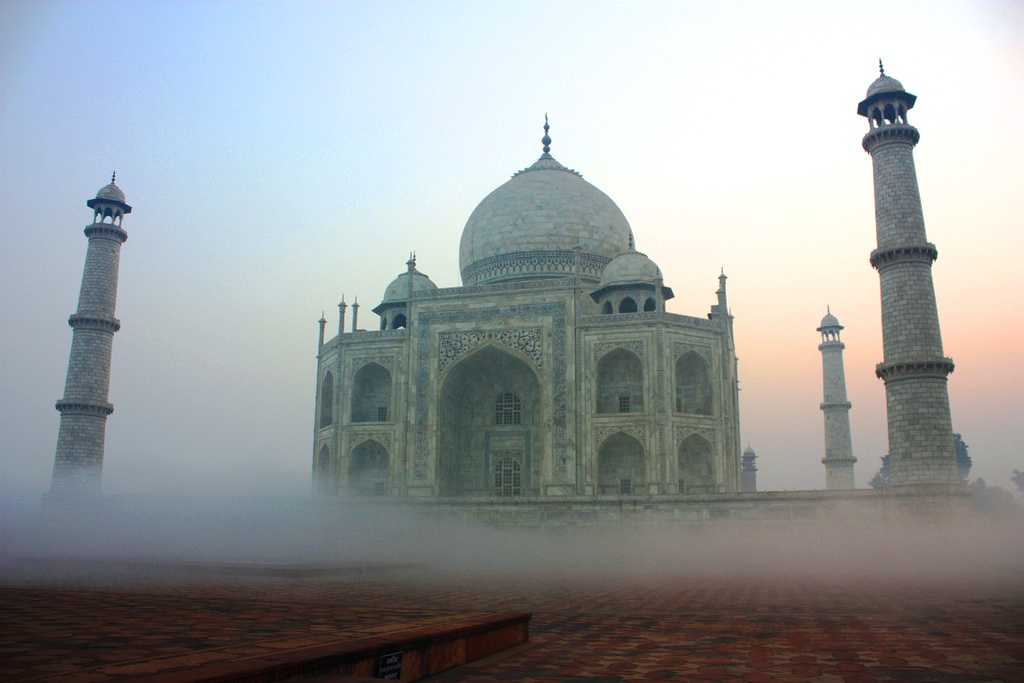
Taj Mahal, Uttar Pradesh
One of Seven Wonders of the World, White Marble Mughal Architecture, the Taj Mahal was build by emperor Shah Jahan in the memory of his wife Mumtaj Mahal. It is located at the bank of river Jamuna in Agra. It was completed in 1653 with then estimated cost of 32 million Indian rupees which would today stand upto 58 billion Indian rupees. It is considered as the best example of Mughal architecture worldwide and is called the “Jewel of Muslim Art in India”. This is probably the monument that is most recognised the world over for its association with the heritage of India.
2. Khajuraho, Madhya Pradesh
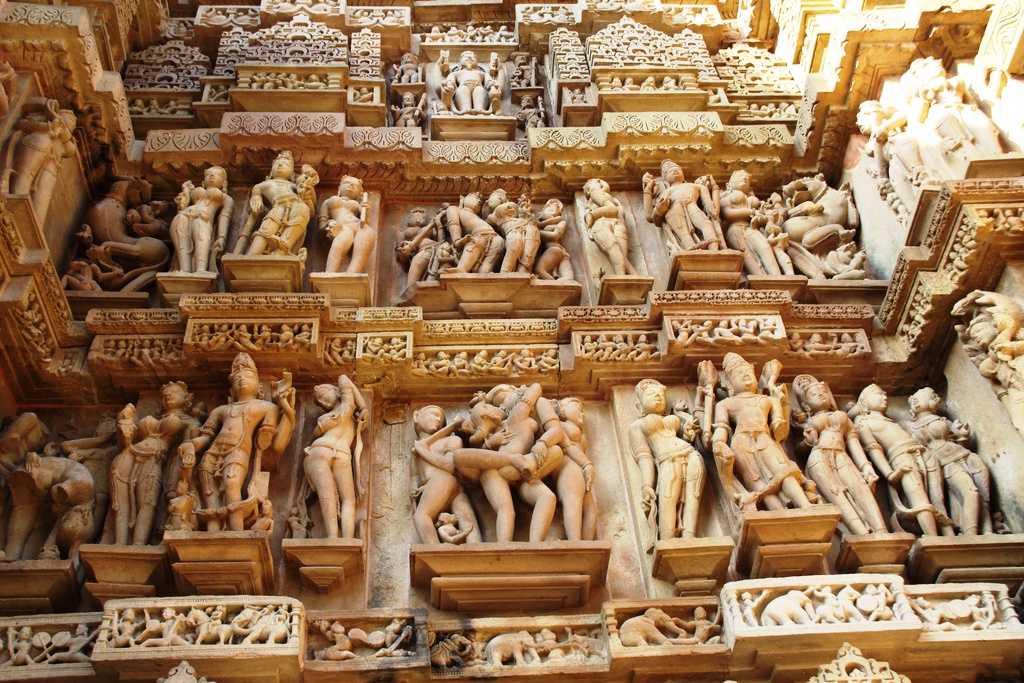
Khajuraho, Madhya Pradesh
Located in Madhya Pradesh, Khajuraho is an important UNESCO World Heritage site in India. Khajuraho is unique heritage site which is famous for a group of Hindu and Jain Temples situated 175 km south-east of Jhansi. They are well known for their Nagara style symbolism and erotic figures and sculptures. These sensuous stone carvings of human and animal form in erotic poses are very aesthetically portrayed and stand testimony to the rich cultural heritage of India. Most of these monuments were built between 950 to 1050 CE under the reign of the Chandella dynasty. It consists of total 85 Temples spread across an area of 20 square kilometres. The Kandariya temple is the most prominent of all of these temples in the Khajuraho complex.
3. Hampi, Karnataka
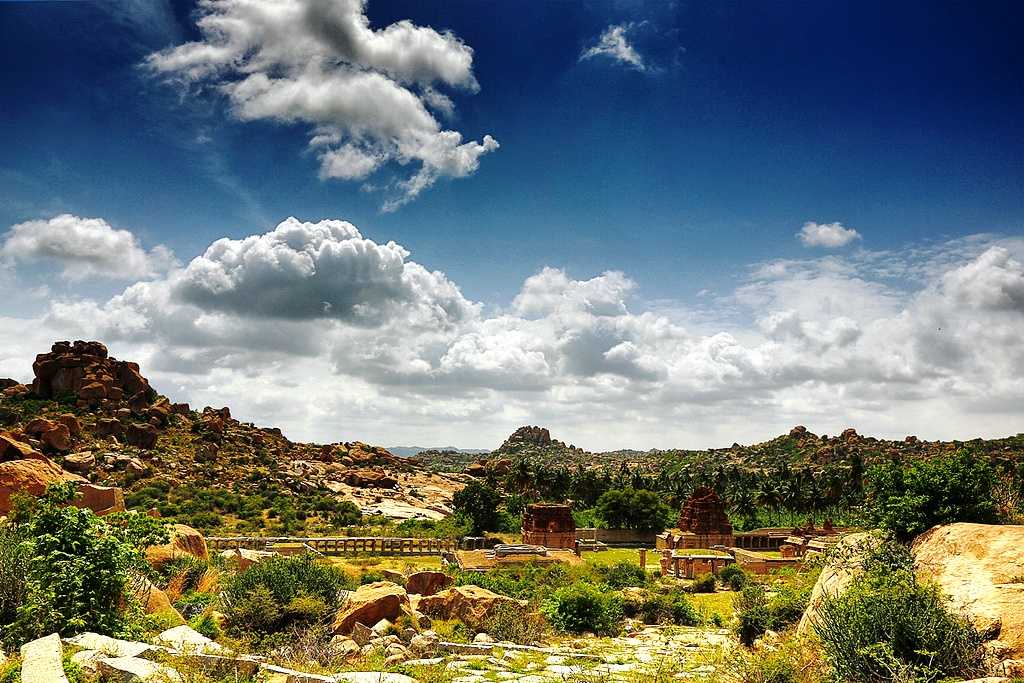
Achyutaraya Temple, Hampi, Karnataka
Hampi is a UNESCO World Heritage site located in the Northern part of Karnataka. It lies within the ruins of the ancient, prosperous kingdom of Vijayanagar. The ruins at Hampi are a collection of heritage sites depicting the fine Dravidian style of art and Architecture. The most important heritage monument in this site is the Virupaksha Temple, which continues to be a very important religious centre for the Hindus. There are several other monuments which are a part of this heritage site, Together, they’re collectively known as the ‘Group of Monuments at Hampi’. Some of the other known ones include the Krishna temple complex, Narasimha, Ganesa, Hemakuta group of temples, Achyutaraya temple complex, Vitthala temple complex, Pattabhirama temple complex, Lotus Mahal complex, several puras or bazaars surrounding the temple complex, and also living quarters and residential areas.
4. Ajanta Caves, Maharashtra

Ajanta Caves, Maharashtra
Famous for/as: Buddhist Rock-cut Cave Monuments, Richly Decorated Paintings and Frescoes similar to Sigiriya Paintings.
One of the first World Heritage sites in India, the Ajanta caves date back to around 2nd century BCE to 650 CE and consist of the finest masterpieces of 31 rock cut Buddhist cave monuments, paintings and sculpture. The caves very built in two different phases. First of Satavahana Period under the patronage of Satvahana Dynasty (230BCE-220CE). Second, the caves of Vakataka Period under the reign of Emperor Harishena of Vakataka Dynasty. The style of Ajanta art and architecture has had a revolutionary impact on the way in Indian art and architecture has progressed all throughout history. Having mainly carvings and sculptures related to the life of Buddha, one can say that this marks the beginning of Indian Classical Art.
5. Ellora Caves, Maharashtra
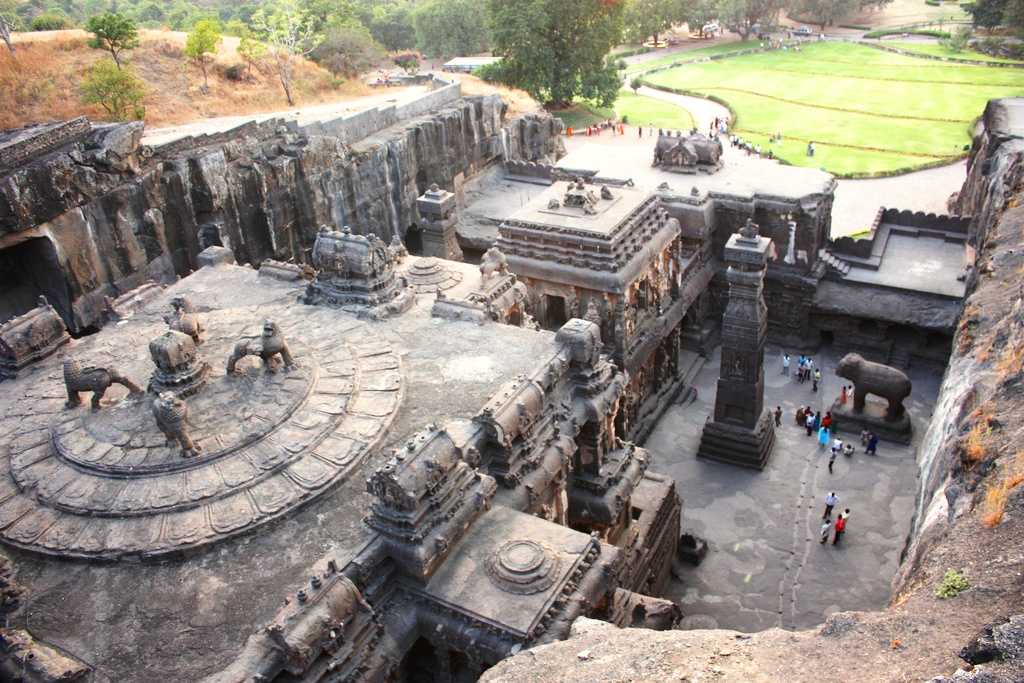
Ellora Caves, Maharashtra
Famous for/as: Buddhist, Jain and Hindu Temples and Monasteries, Caves Excavated out of Hills, Rock-cut Architecture.
The Ellora Caves are an important UNESCO World Heritage site and an archaeological site, ranging 29 kilometers Northwest of the city of Aurangabad. The Ellora Caves are well known for their Indian-rock cut architecture. There are about 34 rock cut temples and caves which can be dated to about 600 to 1000 AD, are important in terms of understanding the lives of the people living in these times. The presence of Hindu, Buddhist and Jain temples and sculptures portray the tolerance which was extended towards different faiths and beliefs in Ancient Indian History. Excavated site consists of Charanandri Hills, Buddhist Hindu and Jain rock-cut temples, Viharas and Maths of 5thand 10th century.
6. Bodh Gaya, Bihar
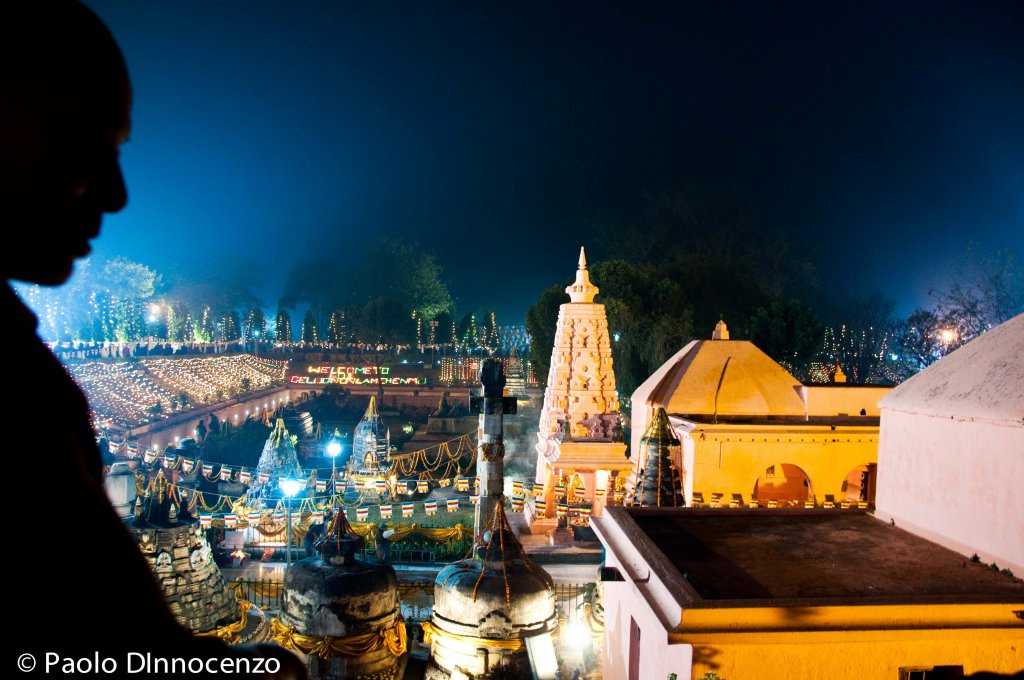
Mahabodhi Temple Complex, Bodh Gaya, Bihar
Bodh Gaya is located almost 96kilometrese away from Patna, Bihar and is one of the UNESCO World Heritage sites in India. It’s an important religious centre for the Buddhists as this was the place where Mahatma Buddha attained enlightenment. The holy Bodhi Tree is the site where Siddhartha gained Enlightenment and became Gautam Buddha. The famous Mahabodhi Temple was established in the reign of Ashoka the Great in about approximately 250 BCE. It’s one of the earliest Buddhist temples. Currently, the Mahabodhi Temple Complex at Bodh Gaya comprises the 50 m tall Mahabodhi Temple, the Vajrasana, sacred Bodhi Tree and other six sacred sites of Buddha’s enlightenment, surrounded by numerous ancient Votive stupas. Owing to all these factors, Bodh Gaya is considered to be the most holy pilgrimage spot for the Buddhists.
7. Sun Temple, Konark, Odisha
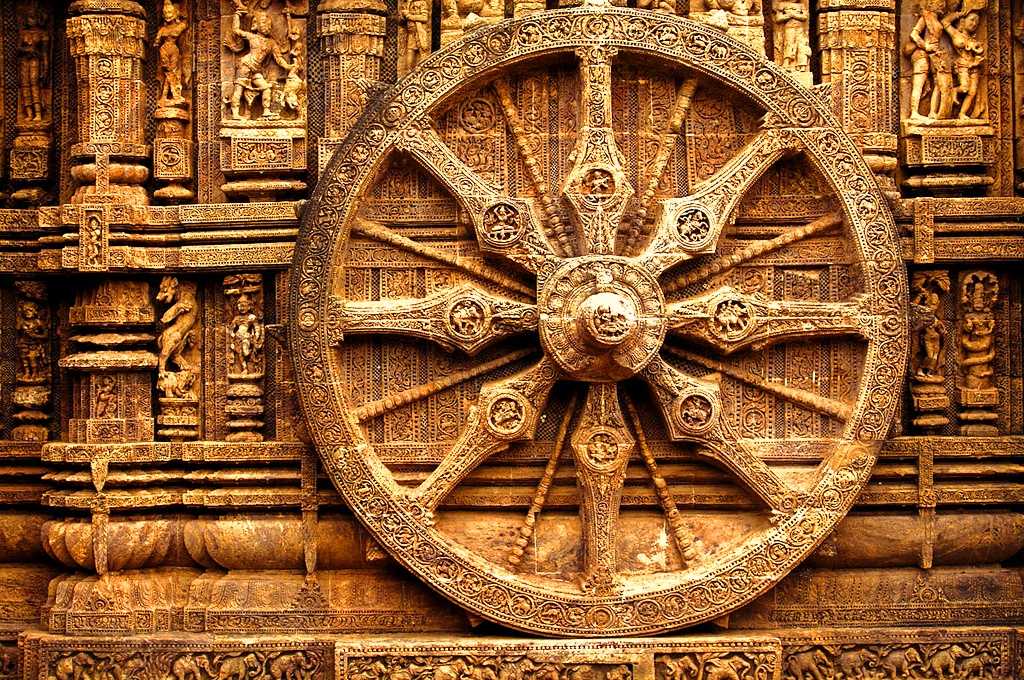
Sun Temple, Konark, Odisha
Famous for/as: Black Pagoda, Chariot of the Sun, Kalinga Architecture, Included in Seven Wonders of India.
Not very far from the popular beach town of Puri, the Sun Temple at Konark is a 13th century temple situated in Konark, Odissha. It was built by king Narasimhadeva I of the Eastern Ganga Dynasty in around AD 1250. The Sun temple is in the shape of a gigantic chariot with carved stone wheel, pillars and walls and is led by 6 enormously carved horses. It’s also considered to be one of the largest brahmin sanctuaries in India. The temple is originally said to be built at the mouth of river Chandrabhaga but the waterline receded since then. This World Heritage Site in India reflects the grandeur of the traditional style of Kalinga Architecture which was prevalent then.
8. Red Fort Complex, Delhi
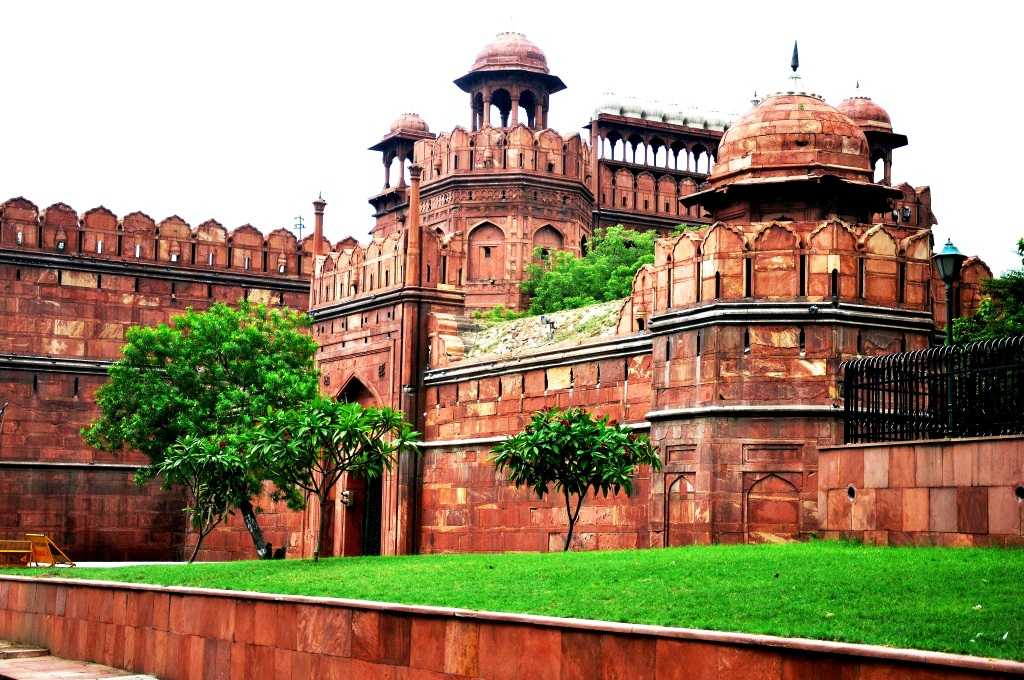
Red Fort, Delhi
Famous for/as: Shahjahanbad, Persian, Timuri and Indian Architectural Styles, Red Sandstone Architecture, Moti Masjid.
Situated in the centre of the historic city of New Delhi, the Red Fort was built by emperor Shah Jahan when he shifted his capital from Agra to Delhi, or what was known as Shahjahanabad at that time. The fort became the political hub of the Mughals. Under Shah Jahan, Mughal art and architecture reached it’s zenith, and the Red Fort is the perfect example of that. One can see the blending of Indo-Islamic, Timurid, Hindu and Persian forms of architecture in several facets of the Red Fort. It’s made up of red sand stone and houses several other smaller buildings such as the private pavallions, the Diwan-i-aam, the Diwan-i-khas. The Red Fort is one of the most popular UNESO World Heritage Sites in India and is managed directly by the Archaeological Survey of India.
9. Sanchi, Madhya Pradesh
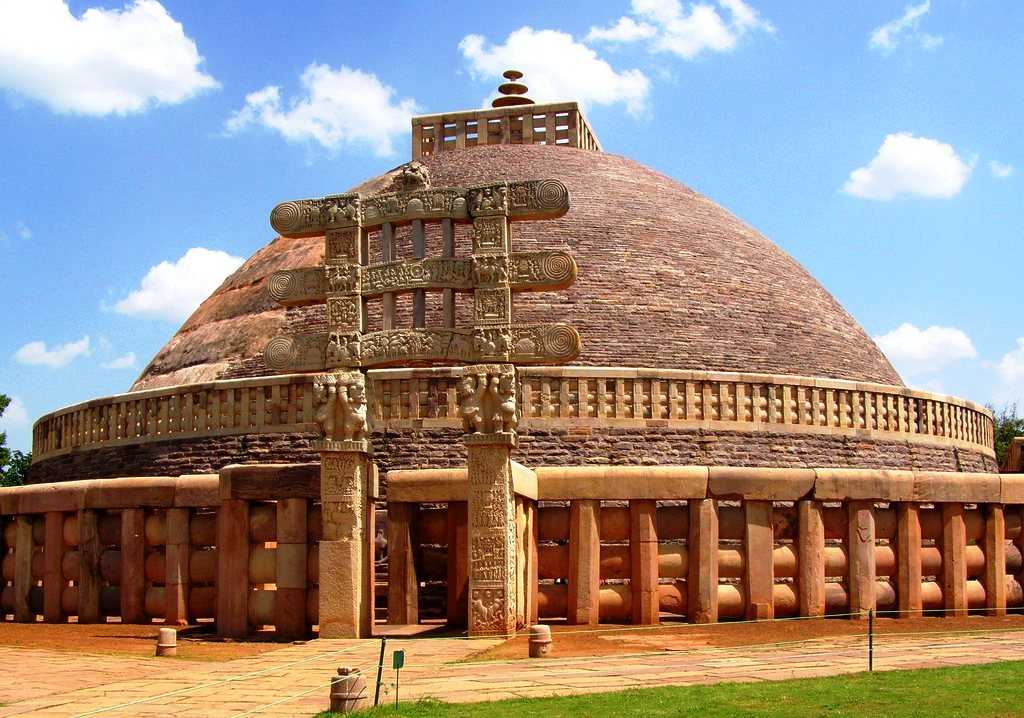
Sanchi Stupa, Madhya Pradesh
Famous for/as: Monolithic Pillars, Palaces, Temples and Monasteries, Mauryan Architecture, Ye Dharma Hetu Inscriptions.
The Buddhist Monuments located at Sanchi in Madhya Pradesh are a World Heritage Site in India and they are the oldest stone structures in India. Originally commissioned by emperor Ashoka in 3rd century BCE, the Sanchi Stupa is located 46 kilometer north-east of Bhopal. Its core was a hemispherical brick structure built over the relics of Buddha and was crowned by the Chatra which symbolizes rank. The stupa was vandalized during 2nd century BCE and renovated during the Satavahana Period when the gateways and the balustrade were built and colored. Apart from the Sanchi stupa, several other structures exist here, such as monolithic pillars, temples, palaces and monasteries. It remained a major pilgrimage site for the Buddhists till about 12th century AD, after which the religion declined in popularity.
10. Chola Temples, Tamil Nadu
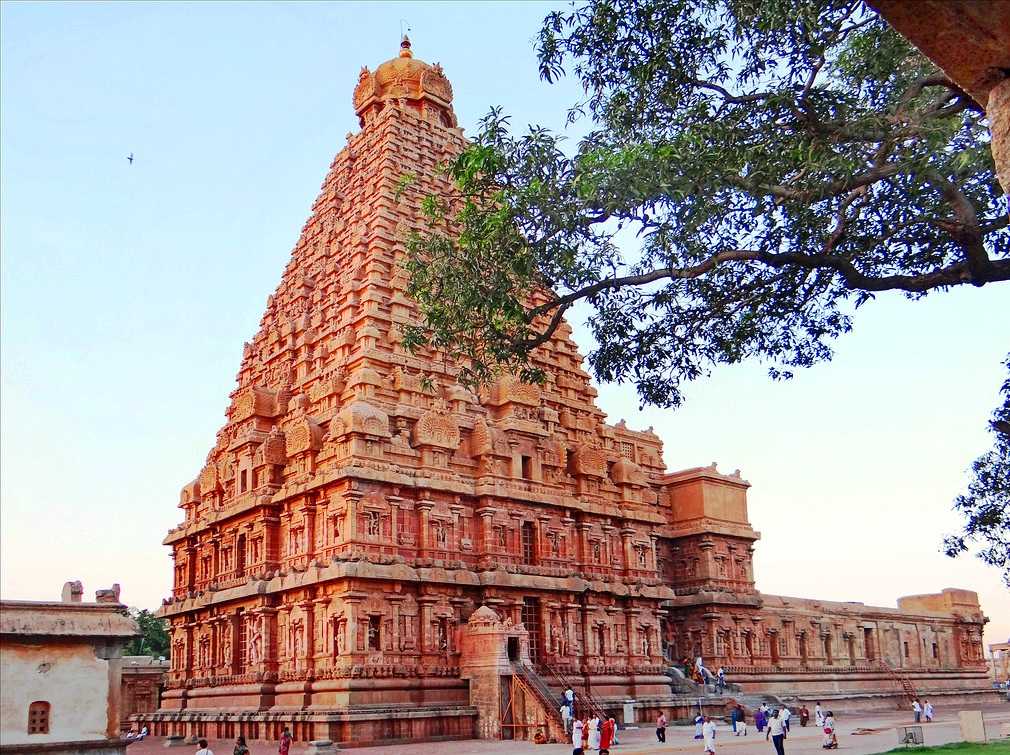
Brihadeshwar Temple built by the Cholas, Tamil Nadu
Includes:
Brihadisvara Temple, Thanjavur, Brihadisvara Temple, Gangaikondacholisvaram and Airavatesvara Temple, Darasuram.
Famous for/as: Chola Architecture, Sculpture, Painting and Bronze Casting.
These temples were built in Southern Part of India during the rule of Chola empire. The Brihadisvara Temple, the Temple at Gangaikonda Cholapuram and the Airavatesvara Temple are the most important of all of these temples. The Brihadisvara temple was built under the reign of Rajaraja 1, and is a milestone when it comes to Chola architecture. The temple at Gangaikondacholapuram was patronized by Rajendera 1 and was dedicated to Lord Shiva. And the the Airavatesvara temple was built during the time of Rajaraja II, and is aesthetically different from the other two. These temples stand testimony to the architectural splendour and beauty of Chola art, architecture and sculpture. These temples are living temples and the rituals and festivities which were observed by people thousands of years ago, are still held. Hence, these 3 temples reflect the ancient culture and heritage of the Tamilians and form an inseparable part of their ancient history.
11. Kaziranga Wild Life Sanctuary, Assam
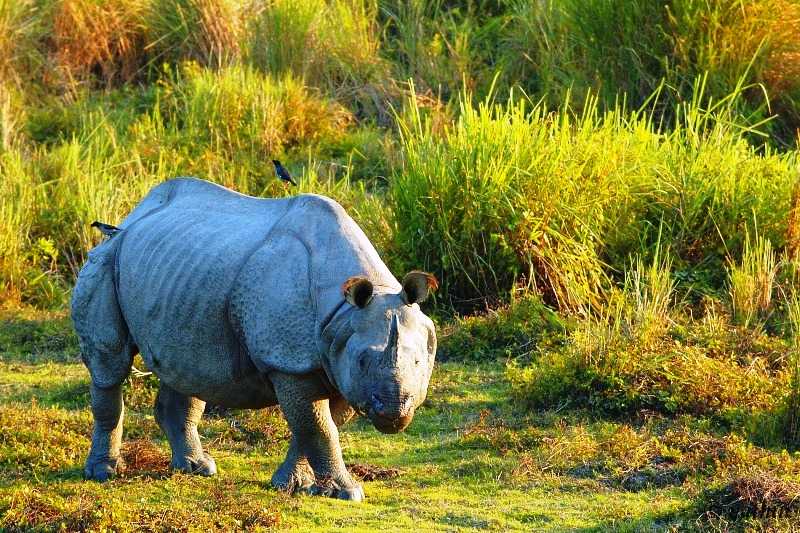
One-Horned Rhino, Kaziranga National Park, Assam
Famous for/as: Worlds 2/3 rd Great One-Horned Rhinoceroses, Highest Density of Tigers in World, Elephants, Wild Water Buffalo, Swamp Deer and recognized Important Bird Area.
Famous for its one horn rhinoceroses, Kaziranga Wildlife Sanctuary is located in Assam and is one of the untouched natural areas in India. It is said that this World Heritage Site in India, was a project initiated by the Lord Curzon when his wife failed to see a single Rhinoceros in the region and urged her husband to take measured regarding protection of these endangered species. This park lies on the flood plains of the river Brahmaputra and consists mainly of dense grasslands, forests and also has several streams and lakes running through it. Kaziranga contains about 15 endangered Indian faunal species, of which the Rhino is the most endangered. Other mammals include capped langur, hoolock gibbon, tiger, leopard, sloth bear, Ganges dolphin, otter, wild boar, water buffalo, gaur, sambar, swamp deer, hog deer and Indian muntjac.
12. Group of Monuments at Mahabalipuram, Tamil Nadu
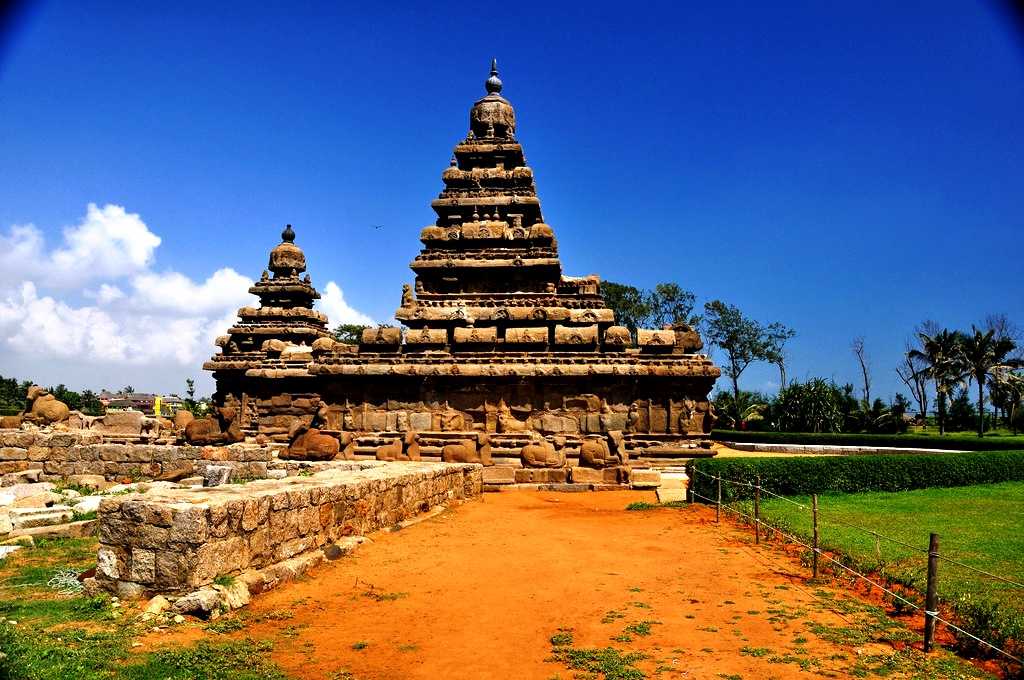
The Shore Temple, Mahabalipuram, Tamil Nadu
Includes:
The Pancha Rathas Temples, Ganesha Ratha, Cave Temples of Mahabalipuram, Structural Temples including the Shore Temple and the Olakkannesvara Temple and the Descent of the Ganges.
Famous for/as: Largest Open Air Rock Relief, Chariot Temples, Mandapas, Pallava Dynasty Architecture.
The Temples are situated in the town of Mahabalipuram which is approximately 58 kilometers from Chennai in the Coromandal Coast of Bay of Bengal. These temples were built under the reign of the Pallava rulers and the striking feature of these temples is the fact that they are all carved out of rock and an important in terms of ratha architecture in India. The group of monument includes 40 sanctuaries including largest open-air-bas-relief, eg, Ganga’s Descent. These World Heritage Sites in India, constitutes the art of Pallava Period with sites likes Pancha Rathas, Dharamaraja Ratha, Arjuna Ratha, Draupadi Ratha, etc. Also the Cave temples of Mahabalipuram which constitutes more than half a dozen caves.
13. Sundarbans National Park, West Bengal
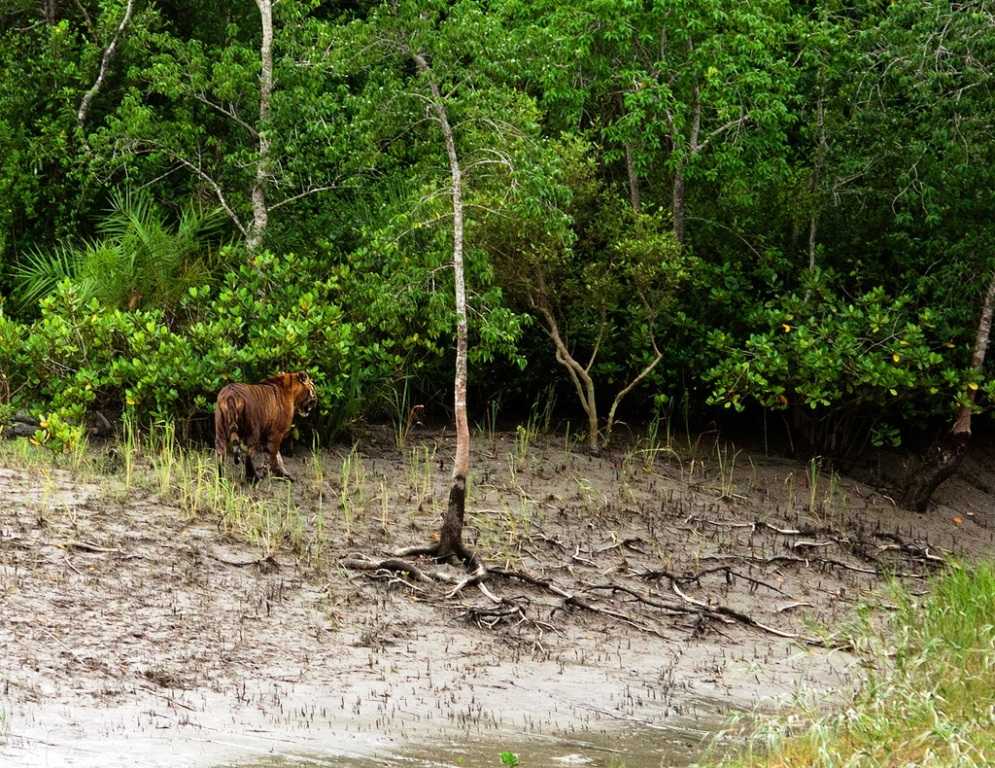
Sunderbans National Park, West Bengal
Famous for/as: Biosphere Reserve, Largest Estuarine Mangrove Forest, Bengal Tiger and Salt-Water Crocodile, Shared with Bangladesh.
Famous for the Royal Bengal Tigers, the Sunderban National Park is a known Tiger reserve and a Biosphere reserve located in the Indian State of West Bengal. It is situated on the Sunderban Deltas formed by the river Ganges in Bay of Bengal. It is one of the largest reserves in India covered mostly by dense Mangrove forests. It’s the world’s largest mangrove forest reserve. Home to the critically endangered Royal Bengal Tiger, there are also other animal species such as the gangetic dolphin, spotted dear, wild boar and other mammal and amphibian species. The rare salt water crocodile is another attraction of this reserve. The tiger population of India is the maximum in this location. Because of frequent contacts with local inhabitants, several tigers have been labelled as ‘man-eaters’.





0 Comments